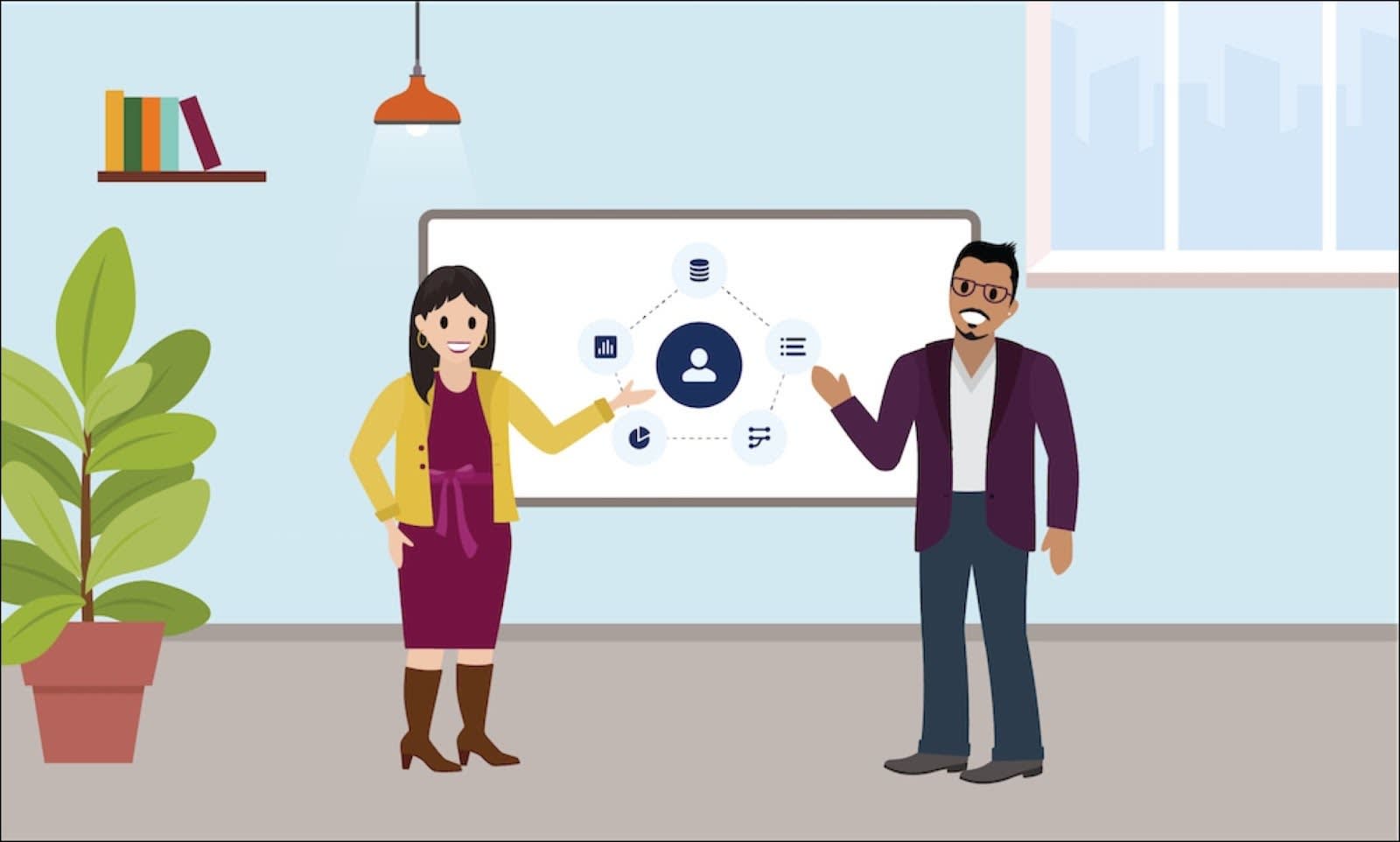Set Up a Customer Hierarchy
Learning Objectives
After completing this unit, you’ll be able to:
- Explain the different types of customers and customer data.
- Explain what customer hierarchies are.
- Set up a time-dependent customer hierarchy.
Meet the Retail Stars
Meet Gustavo De Luca, the sales manager at Alpine Group Nutrition and Beverage. He manages the sales operations of Alpine Group products across different customer accounts. Recently, Gustavo started managing the customer account for Northern Trail Outfitters (NTO), a company that has a large chain of retail stores, trade organizations, and wholesalers across the American West region.
Gustavo wants an effective way to manage information for NTO. He wants to access and record information such as trade org or customer hierarchies, customer roles and relationships, and wholesaler assignments. So whenever any sales rep on his team is planning a retail visit, Gustavo can readily pull up the records for the customer and learn more about them.
Gustavo discusses his requirements with Fatima Daniels, the admin at Alpine Group. Fatima recommends using Consumer Goods Cloud to easily manage customer information. She volunteers to set up the customer data for NTO in the Consumer Goods Cloud app.

In this module, we follow Fatima as she sets up the customer data for NTO in the Consumer Goods Cloud app. The setup includes configuring a time-dependent customer hierarchy, customer roles, and relationships. Before Fatima proceeds, let’s find out more about customer data and customer hierarchy.
Explore Customer Data
In Salesforce Consumer Goods Cloud, a customer can be a trade organization, store, wholesaler, or prospective client. Salesforce admins like Fatima use the Accounts module in Consumer Goods Cloud to centrally create and monitor customer data, such as addresses, communication channels, contact partners, store opening or visiting hours, and customer touch points or points of sale.
Salesforce admins use store classification attributes and customers’ trade org hierarchies for business processes such as strategic visit planning or order management.
The following table illustrates the different types of customers, customer data types, and actions that you can perform with customer data.
Customer Types |
Customer Data Types |
Customer Data Actions |
|---|---|---|
|
Customer data is integrated from legacy systems and includes:
|
Sales managers can use Consumer Goods Cloud to:
|
Customer Hierarchies
A customer hierarchy or a trade org hierarchy represents the way the various accounts under a parent customer account are organized and related to each other. To put it simply, each customer account, be it a retail store or trade organization, is a child account related to the parent account of the customer. Usually, the highest account in this hierarchy is the customer’s central office headquarters, and the lowest account is a retail store. For example, NTO’s headquarters is at the top of the hierarchy, and its retail stores like the San Ramon store or the Bryant St. store are at the bottom. An admin can assign these hierarchies to org units and stores and maintain the validity period of these assignments.

You might be wondering: How are these hierarchies time-dependent? Simply because you can set the validity period of each hierarchy when you create them. A child and parent account hierarchy can be set from the current date to a period of one to five years, or right up to the end of the year 2099. Once the validity period is over, you can modify the hierarchy, if needed. You can also modify the validity period of an existing customer hierarchy. A time-dependent hierarchy is often integrated from Enterprise Resource Planning (ERP) systems and is used in business processes such as the following.
- Determining relevant authorization list or product assortment for a customer. This facilitates business processes such as offline order management, penny perfect pricing, and surveys.
- Finding promotions at the trade organization level for a store.
However, a few Consumer Goods Cloud features such as inventory assessments tasks are based on a standard account hierarchy that’s independent of time.
Set Up a Time-Dependent Customer Hierarchy
In this module, we assume you’re a Consumer Goods Cloud admin with the proper permissions to set up customer data. If you’re not an admin for Consumer Goods Cloud, that’s OK. Read along to learn how your admin would take the steps in a production org. Don't try to follow these steps in your Trailhead Playground. Consumer Goods Cloud isn't available in the Trailhead Playground.
Gustavo needs to plan future activities such as store-wise promotions for the NTO account. So Fatima must set up a time-dependent customer hierarchy for NTO in the Consumer Goods Cloud app. Here’s how she creates the customer trade org hierarchy for an NTO store.
- From the App Launcher, find and select Accounts.
- Select NTO Bryant Street Store.
- Click the Related tab.
- In the Customer Trade Org Hierarchies list, click New.
- In the Child Customer field, NTO Bryant Street Store appears by default.
- In the Parent Customer field, search for and select Northern Trail Outfitters.
- Select a start date for the validity period of the hierarchy: 3/22/2022.
- Select an end date: 12/31/2099.
- Click Save.

Fatima has created the hierarchy and must now add data about customer roles and relationships. Let’s follow along in the next unit.
Resources
